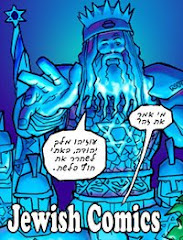It’s a bird … It’s a plane … No, it’s comic book writer A. David Lewis
BOSTON – When over 8,000 people gathered at the Bayside Expo Center at the start of the month for Boston’s first WizardWorld comics and pop-culture convention, there was the expected smattering of fans dressed like their favorite superheroes waiting in long lines to snag an autograph from the likes of Margot Kidder (Lois Lane in the “Superman” films) and Lou Ferrigno (TV’s ‘Incredible Hulk”). But tucked away in the back corner of the convention hall was a room devoted to a program called Wizard School, a series of classes offering aspiring writers and artists the chance to learn from industry professionals.
Most of the Wizard School classes centered on practical skills and technique. But Saturday night, the room was packed with fans for different kind of class. The session was entitled “Ever-Ending Battle: Superheroes and Mortality.” The brainchild of Allston resident A. David Lewis, the program brought together comic book pros to look at superheroes through the lens of thanatology, the study of death. Thanatology is still a relatively young area of inquiry, but two of its products have already permeated the culture: hospice care, and the stages of grief identified by Elizabeth Kubler-Ross.
Lewis is quick to note that “it’s not a bad thing to be concerned about death.” However, he came to the project through comics first. “Over the last few years, I was finding it curious that all these characters were getting killed and brought back. I don’t have any agenda other than discussing it.”
While his research is at an early stage, he has amassed the support not only of convention organizers, but also of the Popular Culture Association, comics journalists, and comics writers and artists. However, he is not new to the field of comics research, having taught classes on comics at Georgetown University and presented papers at conferences on topics such as “The Relationship Between Biblical Midrash and Comic Retcon.”
Although he’s an academic by day, currently teaching at Northeastern University, Lewis has a secret identity of his own as a comic book writer. “I can never decide if I like writing or writing about them better,” he said.
Lewis’s latest project looks at a different kind of superhero: Moses. His graphic novel “Lone and Level Sands” retells the biblical story of the Exodus from Egypt from the perspective of the Egyptians. “I had the idea a long time ago,” he said. “I went to Hebrew School [at Temple Beth Am in Framingham], had my bar mitzvah, but the first time I really gave it any thought was then the movie “Prince of Egypt” came out and I didn’t like it.”
The film’s account of Moses’s life didn’t mesh with Lewis’s memories of the Torah text, so he launched into a research project to find out what Egypt was really like during the time. “The challenge became how to make history and biblical myths live together.”
Lewis cites films about the Holocaust as well as modern American disasters as providing an important conceptual frameworks for him. “I didn’t want it to paint all Egyptians as evil,” he said. “I wanted to tell the full story, see their reaction to the plagues – not just being freaked out when frogs are falling. When everything is done, was there an emergency response plan to deal with the frogs on the ground?”
While Lewis deals with the details of the events, there’s one big detail he’s left up to the readers’ imaginations: “You certainly don’t see God [in the book]; there’s no guide with a beard, voice from the heaven, or hand pointing down,” he said.
He’s also left open to interpretation whether the Egyptian gods are present in the story. “A lot of characters are asking these questions,” he said. “I just never let them have an answer.”
The product is a 160-page story, illustrated by mpMann [yes, that’s how it’s spelled on the cover] that debuted in a black and white edition last April, published by the authors. It generated enough press and sales that Archadia Studios Press has picked it up for broad release. The publisher is now readying a full-color, hardcover edition for December.
“I would love for Hebrew Schools and Jewish groups to read and discuss this,” Lewis said. “But it’s not toeing the company line. It’s
Review: People Who Eat Darkness, by Richard Lloyd Parry
-
*People Who Eat Darkness: The True Story of a Young Woman Who Vanished from
the Streets of Tokyo- and the Evil that Swallowed Her Up*, by Richard Lloyd
...
3 years ago







No comments:
Post a Comment